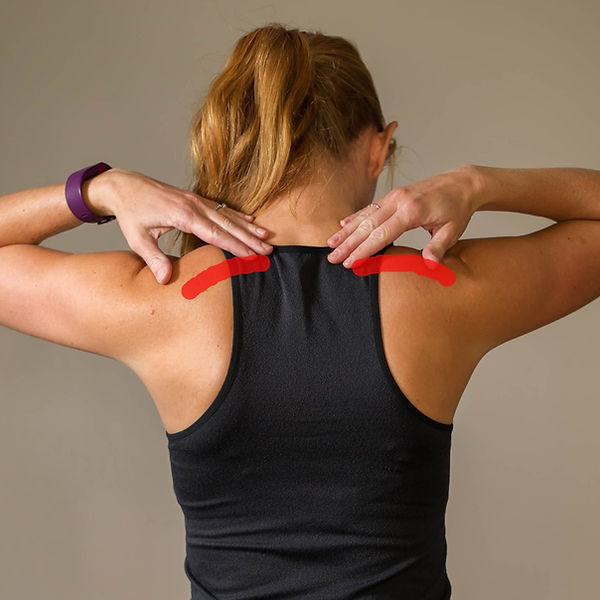What is Fascial Distortion Model?
Fascial Distortion Model (FDM) is a patient-centered model of assessment and treatment taught to DO, MD, NP, PA-C, PT, PTA, OT, ATC, DC, ND, DDS, DMD, DPM, medical students (MD and DO), and Certified Structural Integration practitioners (Rolfers). FDM Academy teaches FDM by instructors certified through the American Fascial Distortion Model Association (AFDMA). FDM was originated by US physician Stephen Typaldos, D.O. It is a system of pattern recognition, where the hand gestures used by a patient to describe their symptoms are divided into six distinct categories of dysfunction. Treatment choices are correlated to the distinct hand gestures, with manual therapy being the primary modality. Essentially all manual therapy techniques can fit into FDM, with many new treatment options being born from FDM theory. The goal of FDM treatment is to restore normal motion and reduce fear of movement in the patient, allowing them to return to function faster, while reducing reliance on traditional treatment modalities.
Some common injuries that are easily resolved with FDM manual treatments include: pulled muscles and muscle tears, sprained ankles, shin splints, Osgood-Schlatter Disease, whiplash, headaches, shoulder pain, frozen joints, kidney stones, plantar fasciitis, sprains, strains and tendonitis, and low back pain. Chronic pain can also be successfully treated using the FDM, but results typically take longer than for acute injuries. Sciatica, carpal tunnel syndrome and many other injuries can also be successfully treated in this model.

Why Learn FDM?
What is different about FDM?
FDM is a model of both assessment and treatment. It is patient-centered, and the only model that focuses on interpreting HOW a patient describes that symptoms with their hand gestures. This pattern recognition of patients' hand gestures is essentially another language that healthcare has been previously unaware of. Practitioners using FDM can have more options in their differential diagnosis, and less need for imaging, labs, and medication. FDM is not just techniques. It incorporates techniques that have been around for a long time, but also provides a framework to develop new techniques that speed return to function. Almost all manual techniques, whether they are joint mobilization, joint manipulation, or soft-tissue/fascial techniques, will fit into FDM. The end goal of the treatment is restoring range of motion, function, and reducing fear of movement in the patient. As there is overlap with other manual therapies, it is often asked how FDM is different. The difference with FDM is often the order of treatment, possibly the intensity of the treatment, and usually a reduced time until the patient notices results. Ultimately, FDM puts more power back into listening (or watching) the patient's immediate needs vs. the practitioner believing that they know what is best. By delivering immediate improvement in range of motion, strength, and pain levels, it helps boost the therapeutic alliance between practitioner and patient, and lends itself to encouraging return to movement and function with confidence.

How does this fit into my practice?
FDM can be integrated with virtually any healthcare practice. FDM helps to empower patients to return to normal activity, and promotes self-care by reducing fear of motion. Practitioners can use FDM along a wide spectrum - from assessment and referral only, to full hands-on care, and anywhere in-between to guide the thinking behind injections, surgery, or other procedures. FDM can blend into and complement Orthopedics, Pain Neuroscience, and the Biopyschosocial Model. Physicians and other medical professionals in almost any specialty can use FDM for assessment and treatment. FDM also fits perfectly into rehab for PTs and ATCs that are looking to get faster results and separate themselves from their competitors with better outcomes. When blended with orthopedic thinking and pain neuroscience, FDM can fill in the holes of traditional treatment that can leave patients dissatisfied with traditional treatment.

How is FDM taught?
FDM through the AFDMA and sister organizations in Europe, Africa, and Asia, is taught in three Modules. Module 1 is an introduction to FDM and covers ankle, knee, and shoulder treatments. Module 2 is also an introduction to FDM and covers the axial spine. Module 3 covers everything else: hands, elbows, feet, hips, and head. Module 3 can be taught as an introduction, but is often offered for those that already have taken a Module 1 or 2. There are also special Advanced FDM courses on a variety of topics not covered in Modules 1-3.
International Certification (IC) examination is available for those practitioners that have taken all three modules and have at least one year experience practicing in the model of FDM.
Instructors (including ours with FDM Academy) that are certified by the AFDMA to teach FDM have years of experience with FDM and have been assistant instructors for over a dozen courses before being able to sit for the examination.
